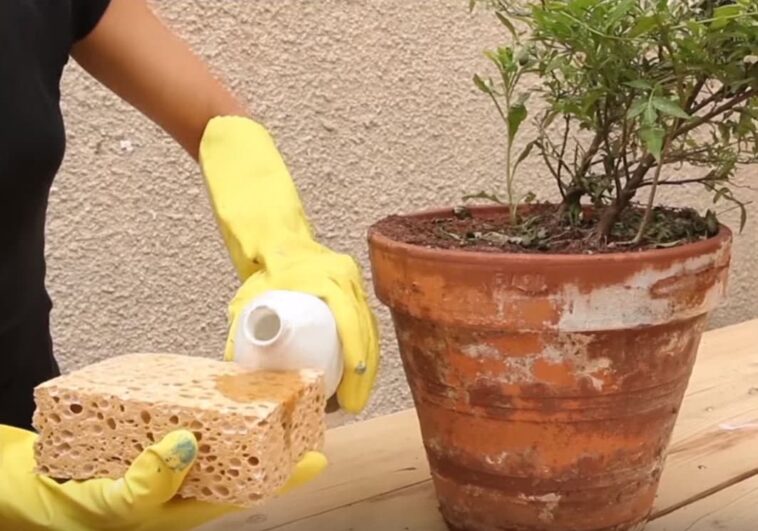Do your terracotta pots have a sort of limescale deposit on their external surface which gives them a whitish appearance in places? In fact, these deposits are due to an accumulation of mineral salts in a pot and this is called saltpeter. In general, this indicates too much humidity due to stagnant water in the saucer, poor drainage, overwatering or an average quality pot that has become too porous over time. Here are our grandmother’s tips for dealing with it!
1) Be preventive against saltpeter!
To avoid excess humidity, water the plant as needed and avoid leaving standing water in the saucer. There are protective solutions available in garden centers against humidity, frost and bad weather to apply to the pot, but you can also protect your pot from a return of saltpeter with a homemade solution composed of 1/3 turpentine. and 2/3 linseed oil. It is necessary to make several successive uniform layers.
2) White vinegar to remove it
Put on gloves and use a simple, non-scratch sponge (or use the yellow side of the sponge). Soak the sponge in vinegar and saturate the pot with the liquid. Once that’s done, take a scrubbing sponge or brush and soak your tool in vinegar before scrubbing the deposits for a long time. It takes a little elbow grease! Rinse or wipe with a sponge soaked in water if the pot is full. Another possible solution: a long bath in lukewarm vinegar.
3) Other techniques?
In the absence of white vinegar, you can try using highly diluted bleach to pass over the pot with a sponge or hot water and flakes of Marseille soap to scrub the marks.
If nothing helps, all you have to do is give it a little sandpaper (for unpainted pots)!
Source: Les Poteries d’Albi
Related articles:


